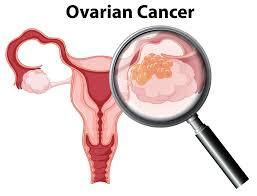Ovarian cancer is often called the “silent killer” because its early signs are subtle and easily missed. It originates in the ovaries, the vital glands responsible for producing eggs and hormones like estrogen and progesterone. For many women, by the time the symptoms become noticeable — persistent bloating, abdominal pain, or changes in urinary patterns — the disease has progressed to an advanced stage. This is why early and effective Ovarian Cancer Treatment in India is crucial.
Who Needs Ovarian Cancer Treatment?
Ovarian Cancer Treatment in India is recommended for any woman diagnosed with ovarian malignancy — whether localized or advanced. Women with abnormal pelvic exams, suspicious imaging, raised CA-125 levels, or confirmed biopsy results need timely treatment. Those with a family history or genetic mutations like BRCA1 or BRCA2 should remain vigilant and seek early diagnosis and consultation.
Prompt treatment helps control the disease, relieves symptoms, and offers women the best chance at a fulfilling life ahead.
Types of Ovarian Cancer Treatments
Top cancer hospitals in India offer comprehensive treatment plans, combining multiple methods for the best outcomes:
Surgery: The cornerstone of ovarian cancer treatment. Surgeons aim to remove the ovaries, fallopian tubes, uterus, and as much of the tumor as possible. This is known as Primary Debulking Surgery (PDS). If the tumor is inoperable at first, chemotherapy may be given first, followed by Interval Debulking Surgery (IDS). Fertility-preserving options are also considered for younger women in early stages.
Chemotherapy: Post-surgery, chemotherapy destroys remaining cancer cells. Standard chemo drugs like carboplatin and paclitaxel are administered through veins or directly into the abdominal cavity (intraperitoneal).
Targeted Therapy: India’s top centers use advanced therapies like PARP inhibitors (olaparib, niraparib) for genetically linked tumors and bevacizumab for anti-angiogenesis — cutting off blood supply to cancer cells.
Hormonal Therapy: Sometimes used for low-grade, hormone-sensitive cancers.
Radiation Therapy: Rarely used, but an option for specific cases or palliative care when needed.
Diagnostics and Treatment Planning
Accurate diagnosis is the first step. Indian hospitals offer advanced diagnostics such as CT scans, MRIs, PET-CT scans, CA-125 blood tests, biopsies, and genetic testing (BRCA1, BRCA2).
A multidisciplinary team — gynecologic oncologists, radiologists, medical oncologists, and fertility experts — collaborates to design a personalized treatment plan based on the stage of the cancer, tumor spread, patient’s health, and fertility wishes.
The Surgical Process: What Happens?
Most ovarian cancer surgeries in India are done under general anesthesia. Depending on cancer spread and patient needs, the procedures may include:
Total Abdominal Hysterectomy (TAH): Removal of the uterus.
Bilateral Salpingo-Oophorectomy (BSO): Removal of both ovaries and fallopian tubes.
Omentectomy: Removal of fatty tissue where cancer often spreads.
Debulking: Removal of all visible tumors from the abdomen, bowel, or diaphragm if necessary.
For early-stage patients, fertility-sparing surgery might be possible, preserving one ovary and the uterus.
Risks & Recovery
Like any major surgery, ovarian cancer treatment carries risks — infection, bleeding, injury to nearby organs, or fertility loss. Chemotherapy can bring side effects like fatigue, hair loss, nausea, and neuropathy. Targeted therapies can cause high blood pressure or clotting risks.
However, India’s top centers use skilled surgical teams, customized chemo regimens, and robust recovery support to minimize complications and improve outcomes.
After surgery, patients typically stay in the hospital for 5–7 days. Pain is managed with medications, and mobility is gradually restored with the help of nursing and physiotherapy teams. Chemotherapy usually starts 3–4 weeks post-surgery, and regular follow-ups ensure monitoring for recurrence.
Post-Treatment Care and Quality of Life
Recovery goes beyond surgery and chemo. Many women benefit from:
Maintenance Therapy: Continued treatment with PARP inhibitors for BRCA-mutated cases.
Regular Surveillance: CA-125 tests and scans every 3–6 months.
Counseling: Emotional and psychological support to handle changes in body image, fertility, or menopause.
Nutrition & Lifestyle Coaching: Helps regain energy and strengthen immunity.
Fertility Counseling: Especially for younger women planning future pregnancies.
Cost of Ovarian Cancer Treatment in India
One of the biggest advantages of seeking Ovarian Cancer Treatment in India is the affordable Cost of Ovarian Cancer Treatment in India. Despite world-class facilities, the cost remains far lower than in Western countries:
- Surgery- USD 4,000 – USD 8,000
- Chemotherapy (per cycle)- USD 1,000 – USD 1,200
- Radiation Therapy (per session)- USD 3,800 – USD 4,200
- Targeted Therapy (per month)- USD 1,500 – USD 2,500
Patients also benefit from transparent pricing and customized packages that ease financial burden.
Why Choose India for Ovarian Cancer Treatment?
India is globally recognised for delivering advanced ovarian cancer treatment at a fraction of the cost compared to Western countries. Key advantages include:
- Renowned gynecologic oncologists and surgical teams.
- Access to state-of-the-art imaging, robotic surgery, and HIPEC (Hyperthermic Intraperitoneal Chemotherapy).
- Affordable chemotherapy and targeted therapy options.
- Comprehensive cancer centres offering multidisciplinary care.
- Dedicated medical tourism support, including visa assistance and interpreter services.
Conclusion
When facing a diagnosis like ovarian cancer, early intervention, advanced treatment options, and compassionate care make all the difference. Ovarian Cancer Treatment in India offers hope to women worldwide — blending world-class expertise with affordability. By choosing the right hospital and specialist team, women can fight cancer with courage and look forward to a brighter tomorrow.





Comments